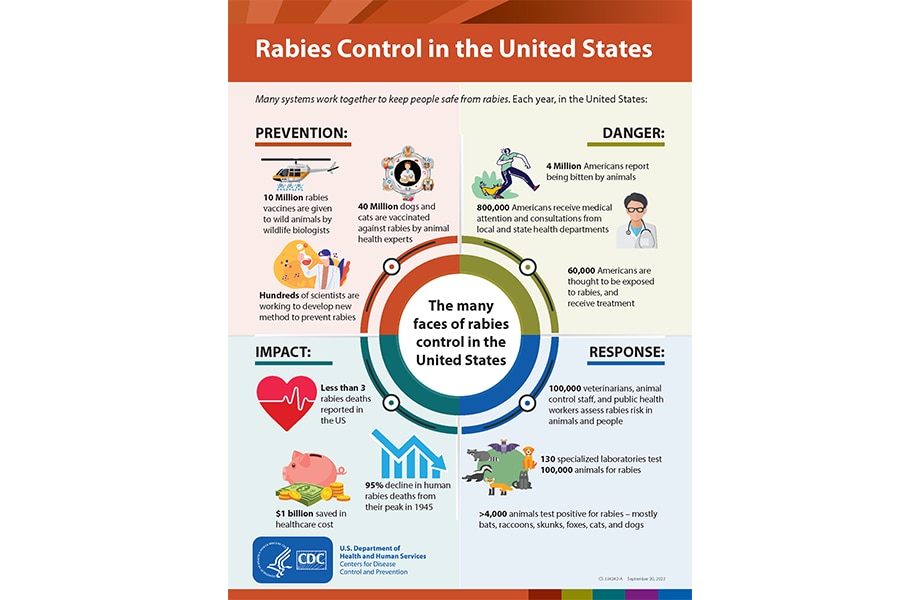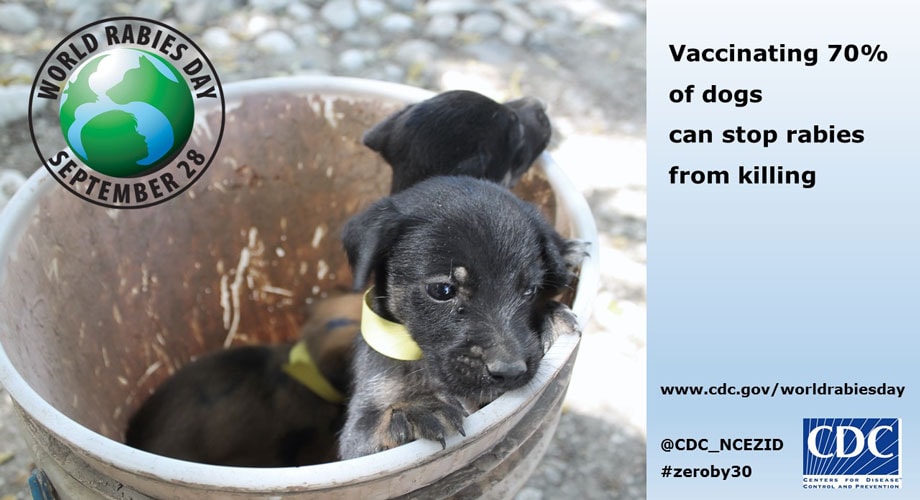World Rabies Day
September 28 is World Rabies Day, a global health observance started in 2007 to raise awareness about the world’s deadliest infectious disease and bring together partners to enhance prevention and control efforts worldwide.
World Rabies Day is an opportunity to reflect on how rabies impacts your community and other communities around the world. Rabies is still present in many parts of the United States, where it is mostly found in wildlife. Because of high vaccination levels in dogs and cats in the U.S., rabies in pets or other domesticated animals is relatively rare. However, rabies in dogs is common in many other countries. In fact, roughly a quarter of reported human rabies deaths among people in the United States result from dog bites they received during international travel. The best way to protect yourself, your family, and your pets is to keep dogs and cats up to date on their rabies vaccinations. You can also protect yourself and your family by travelling smartly, and avoiding contact with dogs and other animals that may have rabies when you travel outside the country. Find out the rabies status of any country you may be visiting using CDC’s interactive assessment site.
While rabies is a 100% preventable disease, nearly 60,000 people die from the disease around the world each year. World Rabies Day is an opportunity to reflect on our efforts to control this deadly disease and remind ourselves that the fight against rabies is not yet over. Major health organizations including the Centers for Disease Control and Prevention, the United States Department of Agriculture (USDA), World Health Organization (WHO), the World Organization for Animal Health (WOAH), and the Food and Agriculture Organization of the United Nations (FAO) are working together to eliminate rabies deaths in people that are caused by dogs by 2030.

CDC’s Rabies Team works in many countries affected by rabies to help set up programs to control, track, provide education, and prevent this disease. See examples of our work around the world.
CDC experts also conduct an annual assessment of individual countries’ rabies status worldwide. This assessment helps inform CDC’s travel health recommendations and animal importation regulations.

CDC microbiologist Lauren Greenberg writes about building rabies diagnostic capacity in the effort to control rabies in countries that are most affected by the disease. You can also read Our Global Voices blog posts by Emily Pieracci and Ryan Wallace, two CDC veterinarians, about their experiences working against rabies around the world.
- CDC Responds to a Case of Rabies in an Imported Dog
- Responding to a Rabies Outbreak in the Dominican Republic
- Is That a Bat in Your Salad?
- PRB Investigates Case of Human Rabies in Virginia Resident Who Traveled to India
- Notes from the Field: Three Human Rabies Deaths Attributed to Bat Exposures — United States, August 2021 | MMWR



